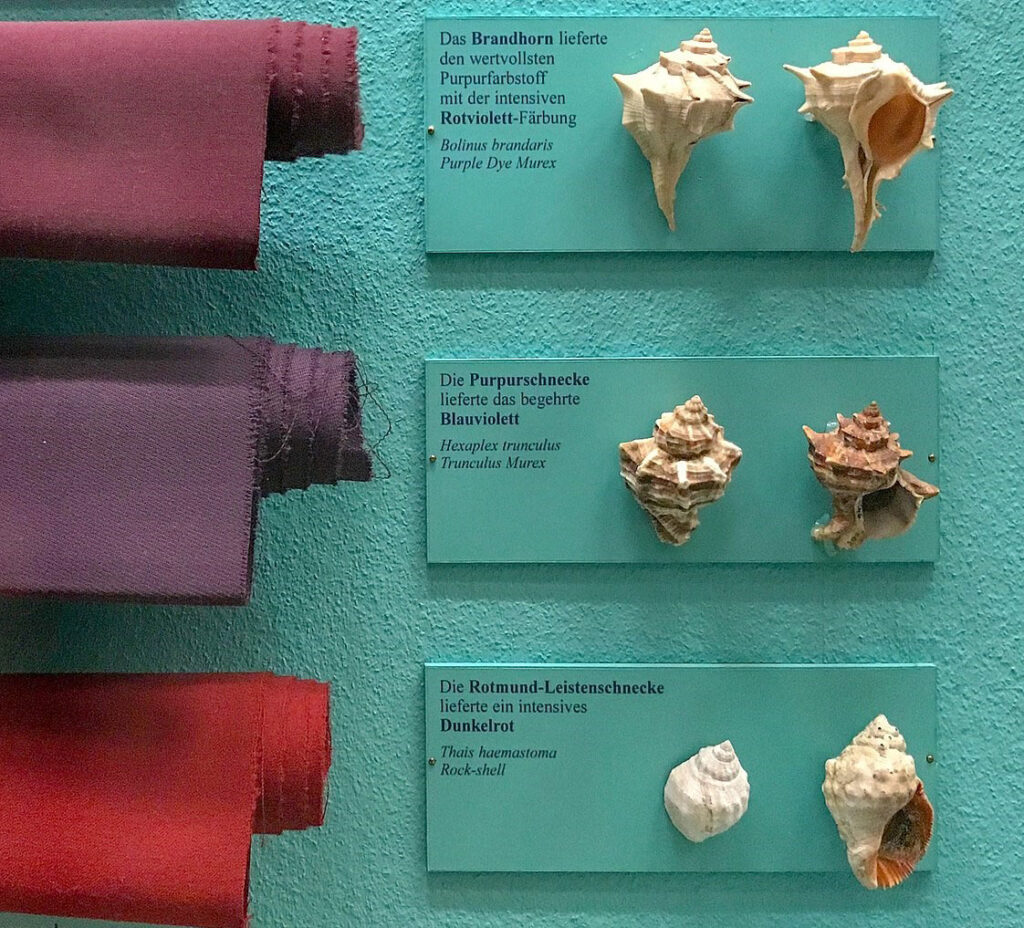Tyrian purple, also known as ‘royal purple,’ was the most expensive dye in the ancient world qensen 1963). Indirect evidence about its value is provided by Ugaritic texts of the 14th century BCE, in which various types of dyed woolens are listed with their prices. Some of these textiles were evidently dyed with Tyrian purple, as their higher prices would suggest (Stieglitz 1979:19). Homer used the special term haliporphyros, ‘sea-purple’, to refer to this dye (Odyssey 6.53: 306), perhaps in order to distinguish it from purple-dye imitations. By the time of Diocletian, in 301 BCE, we know that wool dyed with Tyrian purple was literally worth its weight in gold, as is stated in his Edict on Maximum Prices 24. The basic raw material for the dye production was a liquid, obtained directly from the hypobranchial glands of Mediterranean mollusks.
The shellfish utilized in this dye manufacture were primarily Murex trunculus L. (=Hexaplex) and Murex brandaris L. (=Bolinus). A third variety, Purpura haemastoma L. (=Thais), was used occasionally. Each shellfish produced only a few drops of the precious secretion, which was then boiled in salt water to create the dye. In order to produce Tyrian purple in commercial quantities, many thousands of shellfish were required. Pliny, writing in the first century BCE, provides the only actual recipe for the preparation of the dye solution. He reports (Natural History 9.62.135) that in order to dye 1,000 pounds of wool, it was necessary to use some 200 lbs. of Purpura flesh (his term for this shellfish was bucinum), as well as 111 lbs. of murex. In this process, the gland was extracted from the larger specimens only.



